2019-04-11 - Nº 206
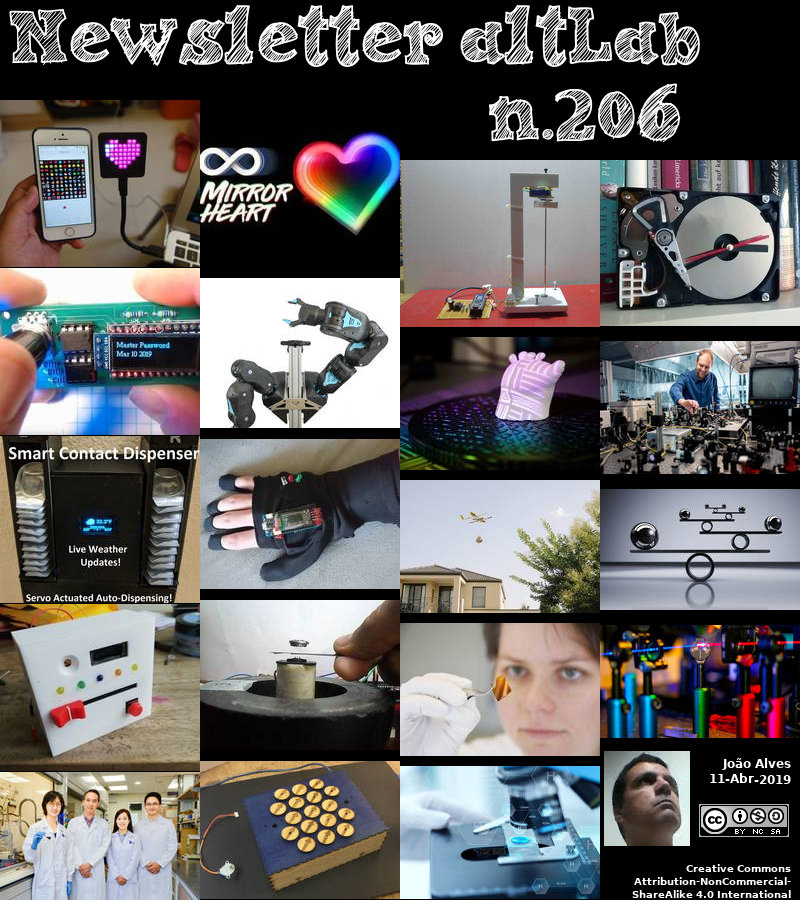
Editorial
Esta é a Newsletter Nº 206 que se apresenta com o mesmo formato que as anteriores. Se gostar da Newsletter partilhe-a!
Todas as Newsletters encontram-se indexadas no link.
Esta Newsletter tem os seguintes tópicos:
Faz hoje anos que nascia, em 1798, Macedonio Melloni. Este físico italiano foi o primeiro a estudar extensivamente a radiação infravermelha. Sir William Frederick Herschel descobriu a radiação infravermelha em 1800, mas a pesquisa estagnou até a invenção de uma termo-pilha em 1830. Este instrumento era constituído por uma série de tiras de dois metais diferentes que produziam corrente eléctrica quando uma extremidade era aquecida. Melloni melhorou a termo-pilha e usou-a para detectar radiação infravermelha. Em 1846, de um ponto de observação no alto do Monte Vesúvio, ele mediu o leve efeito de aquecimento do luar. Mostrou também que o sal-gema, sendo transparente ao infravermelho, fazia lentes e prismas adequados para demonstrar a reflexão, a refracção, a polarização e a interferência do infravermelho da mesma maneira que a luz visível.
Faz também anos hoje que nascia, em 1908, Masaru Ibuka. Este pioneiro da electrónica japonesa foi co-fundador de uma pequena empresa de reparação de rádio do pós-guerra que se transformou na gigante Sony Corporation. Ele mudou a indústria japonesa de produtos electrónicos simplesmente copiando os produtos ocidentais para a inovação com seus próprios produtos electrónicos. Ele introduziu a tecnologia de transístores no Japão. A Sony avançou de fabricar o primeiro rádio transístor japonês para fabricar o primeiro aparelho de televisão transistorizado do mundo. Na década de 1960, Ibuka foi pioneiro na televisão a cores. Aposentou-se da administração em 1976, e voltou-se para pesquisas que desenvolviam produtos como o criativo Walkman e o CD player. As suas realizações foram significativas na construção da confiança do consumidor nos produtos electrónicos japoneses e na reconstrução das economias asiáticas.
Por fim, faz anos hoje que nascia, em 1953, Andrew Wiles. Este matemático britânico e professor da Royal Society na Universidade de Oxford, especializado em teoria dos números. Ele é mais conhecido por provar o último teorema de Fermat, pelo qual recebeu o Prémio Abel de 2016 [6] e a Medalha Copley 2017 da Royal Society. O Teorema de Fermat (às vezes chamado de conjectura de Fermat, especialmente em textos antigos) afirma que não há três inteiros positivos a, b e c que satisfaçam a equação a^n + b^n = c^n para qualquer valor inteiro de n maior que 2. Os casos n = 1 e n = 2 são conhecidos desde a antiguidade por terem um número infinito de soluções.
No passado dia 7 de Abril fez 50 anos que foi publicado o primeiro RFC. Os chamados "Request for Comments" foram iniciados na Internet ainda 18 anos antes da criação do IETF (Internet Engineering Task Force), mantendo no entanto o seu objectivo de lançar à discussão assuntos e normas pertinentes no âmbito da Internet. Existem actualmente mais de 8500 RFC's, sendo que muitos deles já foram substituídos por outros ainda existem alguns que são referencia nos dias de hoje. O RFC 1918 que define as redes IP que devem ser usadas internamente e que não são routeados na Internet é um dos mais conhecidos. Existem mais alguns como o 5322 que originalmente era o 822 e que define o funcionamento do SMTP - protocolo de troca de mensagens de correio electrónico ou o 1954 que foi escrito pelo Tim Berners-Lee e que define o funcionamento do protocolo HTTP 1.0. Mas nada como ir à página da Wiki que Lista os RFCs entre os quais os mais importantes.
Esta semana que passou foi também noticia a imagem absolutamente incrível do gigante buraco negro que se encontra na galáxia do Messier 87 (M87). A M87 encontra-se a 55 milhões de anos-luz na constelação Virgem, tem aproximadamente o peso de 6.5 mil milhões a massa do Sol. Em Abril de 2017, todos os telescópios do Event Horizon Telescope viraram-se e olharam para a galáxia a 55 milhões de anos-luz de distância chamada M87 e o buraco negro supermassivo no seu núcleo, foi possível ver o que se pensava ser invisível. Foi visto e fotografado um buraco negro. Para obter a imagem foram processados terabytes de informação por supercomputadores na Alemanha e nos Estados Unidos. Foi um trabalho conjunto de cerca de 200 cientistas.
Também hoje foi noticia a falha na aterragem da aeronave Beresheet de Israel que cai na Lua durante a sua tentativa de aterragem. A aeronave robótica Beresheet, construída pela SpaceIL e pela Israel Aerospace Industries (IAI), tinha como objectivo tornar-se a primeira nave israelita e a primeira missão financiada por fundos privados a pousar na Lua. Mas o pequeno robô não o conseguiu, despenhando-se contra a superfície da Lua por volta das três horas da tarde. EDT (1925 GMT). O controle da missão perdeu as comunicações com a aeronave quando ela estava cerca de 149 metros acima da superfície da Lua.
Na Newsletter desta semana apresentamos diversos projetos de maker. É apresentada a revista newelectronics de 9 de Abril.
 João Alves ([email protected])
João Alves ([email protected])
O conteúdo da Newsletter encontra-se sob a licença  Creative Commons Attribution-NonCommercial-ShareAlike 4.0 International License.
Creative Commons Attribution-NonCommercial-ShareAlike 4.0 International License.
Novidades da Semana

Fifty Years of RFCs
"April 7, 2019 marks the fiftieth anniversary for the RFC Series, which began in April 1969 with the publication of “Host Software” by Steve Crocker. While the Series itself predates the Internet Engineering Task Force (IETF) by eighteen years, today the IETF is the single largest source of RFCs. It’s an interesting question – did the existence of a growing community that published technical documents like RFCs result in forming the IETF? Further, is the IETF the reason RFCs are still published today? The Series includes documents originating in other ways, including from the Internet Research Task Force (IRTF), the Internet Architecture Board (IAB), and contributions via the Independent Submissions stream; they are a small, and important, percentage of the whole. The early RFCs were, in fact, requests for comments on ideas and proposals; the goal was to start conversations rather than to create an archival record of a standard or best practice." [...]

Seeing the unseeable
"Event Horizon Telescope researchers reveal first-ever image of a black hole A global team of astronomers, led by Harvard scientists, have for the first time captured an image of a black hole. The image, revealed today by researchers from the Event Horizon Telescope (EHT), shows a bright ring of material surrounding a dark center that marks the event horizon of the black hole — the “point of no return, where nothing, not even light — can escape.” The image is the result of a colossal, years-long effort by dozens of researchers. To find it, the EHT focused on a pair of supermassive black holes — the one at the center of the Milky Way galaxy, known as Sagittarius A* (pronounced Sagittarius A-star), and a second that lies at the heart of an elliptical galaxy called M87. Capturing an image of a black hole, project leaders said, is about more than getting the first glimpse of one of the most curious objects in the cosmos. It also opens the door to allowing astronomers and physicists to test Einstein’s theories of gravity and general relativity under the most extreme conditions in the universe. “A black hole, if you looked at it naked … would be invisible,” said Sheperd Doeleman, director of the EHT." [...]

Israel's Beresheet Spacecraft Crashes Into Moon During Landing Attempt
"Israel's first moon lander came up just short in its historic touchdown bid this afternoon (April 11). The robotic Beresheet spacecraft, built by SpaceIL and Israel Aerospace Industries (IAI), aimed to become the first Israeli craft, and the first privately funded mission, ever to land softly on the moon. But the little robot couldn't quite make it, crashing into the gray dirt around 3:25 p.m. EDT (1925 GMT). Mission control lost communications with the spacecraft when it was about 489 feet (149 meters) above the moon's surface. "We had a failure in the spacecraft; we unfortunately have not managed to land successfully," Opher Doron, the general manager of IAI, said during a live broadcast from mission control. "It's a tremendous achievement up 'til now."" [...]
Outras Notícias
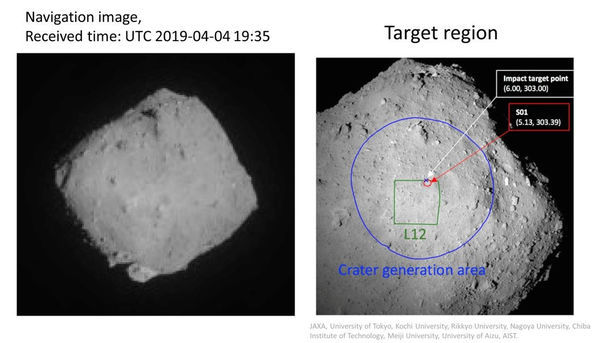
Japan's Hayabusa 2 probe is blasting a hole in an asteroid tonight (and that's awesome)
"It’s a big day for space: launches, tests, orbits and now a distant probe is going to shoot an asteroid with its space gun and make a new crater to play in. It’s Hayabusa 2, Japan’s ambitious and so far highly successful sample return mission to an object called Ryugu. Launched in 2014, Hayabusa 2 has been in the region of Ryugu for several months, carrying out a series of investigations. It has four small landers on board, two of which it dropped off late last year, and which have been hopping happily around the asteroid. In February the craft itself touched down on the surface, stirring up the dust considerably, but nothing like what will happen when they fire a big old bullet into the surface at 4,400 mph using the Small Carry-on Impactor. Here’s a test of the setup firing into a Ryugu-like substrate in a lab here on Earth: Now imagine that happening to an asteroid with very little gravity — the dust and flecks are going to fly all over the place." [...]

TSMC and OIP Ecosystem Partners Deliver Industry's First Complete Design Infrastructure for 5nm Process Technology
"Enabling next-generation silicon designs targeting advanced mobile and high-performance computing applications TSMC today announced delivery of the complete version of its 5 nanometer (nm) design infrastructure within the Open Innovation Platform® (OIP). This full release enables 5nm systems-on-chip (SoC) designs in next-generation advanced mobile and high-performance computing (HPC) applications, targeting high-growth 5G and artificial intelligence markets. Leading Electronic Design Automation (EDA) and IP vendors collaborated with TSMC to develop and validate the complete design infrastructure, including technology files, process design kits (PDKs), tools, flows and IP, through multiple silicon test vehicles. TSMC’s 5nm process is already in risk production and offers IC designers a new level of performance and power optimization targeted at the next generation of high-end mobile and HPC applications. Compared with TSMC’s 7nm process, its innovative scaling features deliver 1.8X logic density and 15% speed gain on an ARM® Cortex®-A72 core, along with superior SRAM and analog area reduction enabled by the process architecture. The 5nm process enjoys the benefits of process simplification provided by EUV lithography, and is making excellent progress in yield learning, achieving the best technology maturity at the same corresponding stage as compared to TSMC's previous nodes." [...]

Google and other tech giants are quietly buying up the most important part of the internet
"Google makes billions from its cloud platform. Now it’s using those billions to buy up the internet itself — or at least the submarine cables that make up the internet backbone. In February, the company announced its intention to move forward with the development of the Curie cable, a new undersea line stretching from California to Chile. It will be the first private intercontinental cable ever built by a major non-telecom company. And if you step back and just look at intracontinental cables, Google has fully financed a number of those already; it was one of the first companies to build a fully private submarine line. Google isn’t alone." [...]

Mbed OS 5.12.1 released
"We are pleased to announce the Mbed OS 5.12.1 release is now available. This is the latest patch release based on the feature set that Mbed OS 5.12 introduces. We have added support for two new targets in this release, MTB ublox ODIN W2 and NUCLEO-F413ZH.ST CUBE for the STM32F0 series has been updated to v1.9.0. This brings: CMSIS part update from 2.3.1 to 2.3.3 HAL part update from 1.5.0 to 1.7.0 Our BLE Nordic PAL client implementation has been replaced. The previous implementation was found to contain a number issues deep in the GattClient logic (improper queueing and order ofoperations). It was deemed more efficient to re-write the implementation than try to patch the previous version." [...]

Wing launches commercial air delivery service in Canberra
"Wing envisions a future when everyone can have access to goods they need as soon as they need them, delivered straight to their doorstep. Today, we are excited to be launching our first air delivery service in North Canberra. Our service allows customers to order a range of items such as fresh food, hot coffee or over-the-counter chemist items on our mobile app, and have them delivered directly to their homes by drone in minutes. The delivery service will initially be available to a limited set of eligible homes in the suburbs of Crace, Palmerston and Franklin. We expect to gradually expand to more customers in Harrison and Gungahlin in the coming weeks and months. Whether you’re a parent with a sick child at home and have run out of baby paracetamol, a busy professional who forgot to pick up fresh bread during your regular weekly shop, or you simply just want to order your morning flat white without the hassle of having to drive to the cafe, Wing has teamed up with local Canberra businesses to give customers the opportunity to have a range of goods delivered in a handful of minutes." [...]
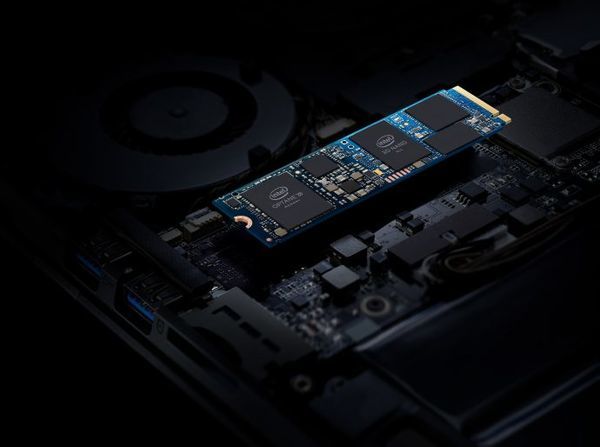
Intel Optane Technology and Intel QLC NAND Technology Come Together on a Single Drive
"Intel today revealed details about Intel® Optane™ memory H10 with solid-state storage – an innovative device that combines the superior responsiveness of Intel Optane technology with the storage capacity of Intel® Quad Level Cell (QLC) 3D NAND technology in a single space-saver M.2 form factor. “Intel Optane memory H10 with solid-state storage features the unique combination of Intel Optane technology and Intel QLC 3D NAND – exemplifying our disruptive approach to memory and storage that unleashes the full power of Intel-connected platforms in a way no else can provide.” –Rob Crooke, Intel senior vice president and general manager of the Non-Volatile Memory Solutions Group Why It’s Important: Combining Intel Optane technology with Intel QLC 3D NAND technology on a single M.2 module enables Intel Optane memory expansion into thin and light notebooks and certain space-constrained desktop form factors – such as all-in-one PCs and mini PCs. The new product also offers a higher level of performance not met by traditional Triple Level Cell (TLC) 3D NAND SSDs today and eliminates the need for a secondary storage device. How It’s Different: Intel’s leadership in computing infrastructure and design allows the company to utilize the value of the platform in its entirety (software, chipset, processor, memory and storage) and deliver that value to the customer. The combination of high-speed acceleration and large SSD storage capacity on a single drive will benefit everyday computer users, whether they use their systems to create, game or work. Compared to a standalone TLC 3D NAND SSD system, Intel Optane memory H10 with solid-state storage enables both faster access to frequently used applications and files and better responsiveness with background activity." [...]
Ciência e Tecnologia

Quantum memory could write itself
"CQT researchers and their collaborators define measure of memory capacity as a quantum thermodynamic resource The phrase ‘knowledge is power’ holds true in physics. In the science of thermodynamics, the capacity for a system to do work turns out to be closely connected to its capacity to store information. This has led to a well-developed theory of information thermodynamics, where energy sources are no longer just cold and hot reservoirs, but any structured data within noise. The world, however, is fundamentally quantum. Both energy and data can exist in quantum superpositions. In such context, the conversion between and power and knowledge in quantum systems is far less well understood." [...]
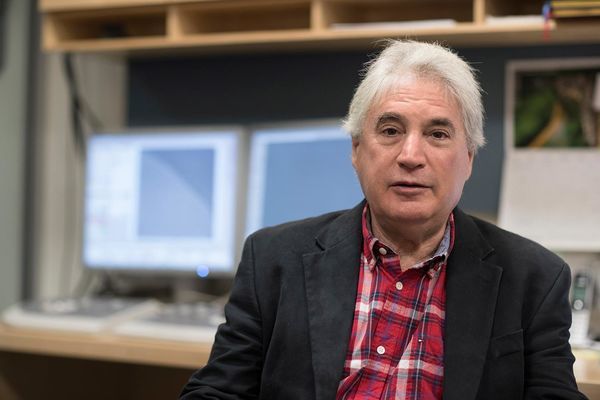
Electricity-conducting Bacteria Yield Secret To Tiny Batteries, Big Medical Advances
"Scientists at the University of Virginia and elsewhere have made a surprising discovery about how strange bacteria that live in soil and sediment can conduct electricity. The bacteria do so, the researchers determined, through a seamless biological structure never before seen in nature – a structure scientists could co-opt to miniaturize electronics, create powerful-yet-tiny batteries, build pacemakers without wires and develop a host of other medical advances. Scientists had believed Geobacter sulfurreducens conducted electricity through common, hair-like appendages called pili. Instead, a researcher at the UVA School of Medicine and his collaborators have determined that the bacteria transmit electricity through immaculately ordered fibers made of an entirely different protein. These proteins surround a core of metal-containing molecules, much like an electric cord contains metal wires. This “nanowire,” however, is 100,000 times smaller than the width of a human hair." [...]
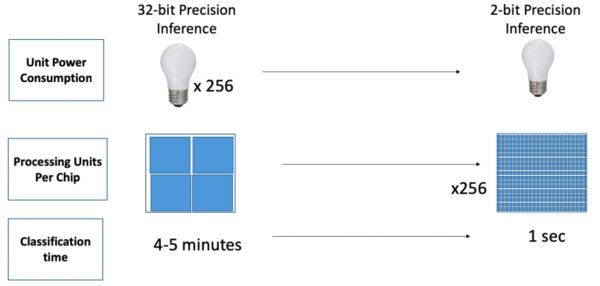
Highly Accurate Deep Learning Inference with 2-bit Precision
"Three months ago, at NeurIPS 2019, we presented a robust 8-bit platform that toppled the 16-bit barrier for deep learning training while fully preserving model accuracy. Today, we’re very excited to be sharing new results that push the envelope for deep learning inference, enabling model deployment to work with high accuracy down to 2-bit precision. IBM Research has pioneered the pursuit of reduced precision and approximate computing techniques. In the 2015 seminal paper at the International Conference on Machine Learning (ICML), we demonstrated a quadratic improvement in performance efficiency by reducing precision from 32-bit to 16-bit for both training and deployment. Our approach has been broadly adopted, while we have continued to lead with innovations in approximate computing and to push the boundaries of reduced precision. At the 2019 SysML conference, we share new results that transcend the leading edge of 8-bit precision for deep learning training: our new activation technique to create a quantized neural network (QNN) achieves high accuracy for 4-bit and 2-bit precision computations, generating multiplicative gains in performance and efficiency." [...]

High-performance combination: Batteries made of silicon and sulphur
"A research team of material scientists present an innovative, sustainable energy storage concept at Hannover Messe Longer lifetimes, larger ranges and faster recharging - developments such as electric mobility or the miniaturisation of electronics place new requirements on rechargeable batteries. With its enormous storage capacity, silicon has decisive advantages over the materials used in commercially available lithium-ion batteries. A research team from the Institute for Materials Science at Kiel University, in cooperation with the wet-chemistry manufacturer RENA Technologies GmbH, has developed high-performance silicon anodes. Combined with sulphur cathodes they could reach an energy density twice to three times higher, up to 90 percent shorter charging time and 20 percent lower weight. In addition to electric mobility, the new battery concept could be used for applications as mobile phones, shipbuilding or stationary and temporary storage for solar and wind power installations. The research team presents the production and the potential use of the silicon-sulphur batteries at the Hannover Messe at the booth of Kiel University (Hall 2, C07)." [...]

A low-cost, durable device to harness wave energy
"European engineers have developed a novel generator that could be used to power thousands of homes. Ocean waves hold a tremendous amount of untapped energy that is more than capable of meeting the world’s electricity needs. However, electricity generation from waves has a number of drawbacks that make it economically unviable. Current marine constructions are costly, and it’s difficult to build a device robust enough to survive the harsh ocean environment. A new wave energy technology developed with EU funding for the POLYWEC and WETFEET projects promises to overcome these obstacles. A European team of engineers working on these projects have created a durable device that could help generate low-cost electricity for thousands of homes in the coming years." [...]

Building a smart city with power system enhanced by AI and hydrogen storage
"UNSW Sydney is pursuing new partnerships to realise the potential of smart cities and hybrid energy storage systems to power them. UNSW Sydney will lead Australia’s first fully integrated smart city trial in partnership with Providence Asset Group (PAG) and Tamworth City Council, in a deal announced at an event at the University this week. The trial will be the first based on Internet of Things (IoT) technologies and include applications across transport, energy, health, telecommunications and other community services. Previous trials have incorporated only energy systems and are based on older technology on individual user cases instead of an integrated approach. Professor Joe Dong, Director of the UNSW Digital Futures Grid Institute, is leading the research at UNSW and said the aim for the Tamworth Smart City project was to build the IT systems that would monitor and control data flowing through “smart” services, using the wireless network. Using existing IoT infrastructure provided seamless integration of IoT devices, from home appliances and utility monitors to council services such as waste management, lighting and parking, and asset security, to health services like remote patient monitoring." [...]

Photons trained for optical fibre obstacle course will deliver stronger cyber security
"A team from the NUS-Singtel Cyber Security Research & Development Laboratory, including CQT researchers, demonstrate a way to improve quantum key distribution over fibre networks Beneath many cities are complex networks of optical fibres that carry data, encoded in pulses of light, to offices and homes. Researchers from the Centre for Quantum Technologies have contributed to demonstrating a technique that will help pairs of entangled light particles smoothly navigate these networks, a breakthrough that will enable stronger cyber security. They worked as part of a team from the National University of Singapore (NUS) and Singtel, Asia’s leading communications technology group, performing the demonstration over 10km of Singtel’s fibre network. This project, conducted in Singapore, is driven by the NUS-Singtel Cyber Security Research & Development Laboratory, a public-private partnership supported by the National Research Foundation, Prime Minister’s Office, Singapore. The scientific results are described in a paper published 4 April in Applied Physics Letters. This new approach supports the deployment of a technology known as quantum key distribution (QKD)." [...]
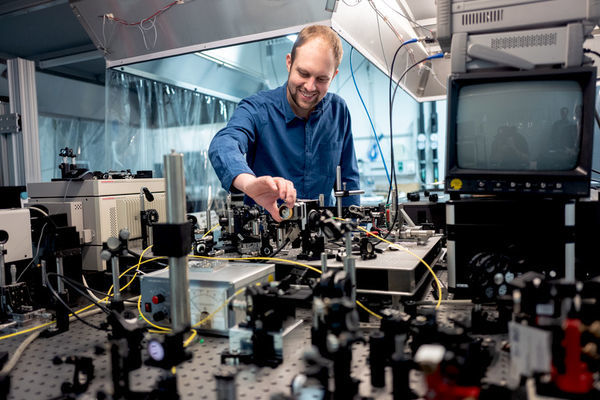
Spin lasers facilitate rapid data transfer
"So-called spin lasers may potentially accelerate data transfer in optical fibre cables to a considerable extent, while reducing energy consumption at the same time. Engineers at Ruhr-Universität Bochum have developed a novel concept for rapid data transfer via optical fibre cables. In current systems, a laser transmits light signals through the cables and information is coded in the modulation of light intensity. The new system, a semiconductor spin laser, is based on a modulation of light polarisation instead. Published on 3 April 2019 in the journal “Nature”, the study demonstrates that spin lasers have the capacity of working at least five times as fast as the best traditional systems, while consuming only a fraction of energy. Unlike other spin-based semiconductor systems, the technology potentially works at room temperature and doesn’t require any external magnetic fields." [...]
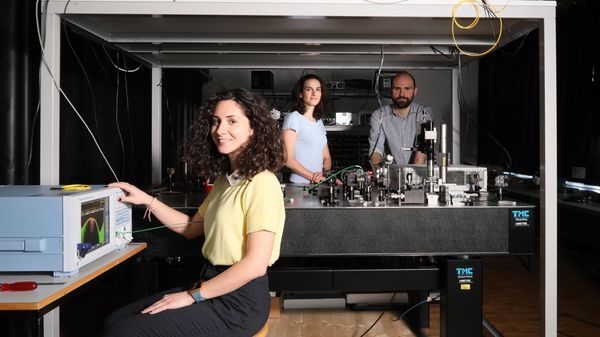
Detecting pollution with a compact laser source
"Researchers at EPFL have developed a simple mid-infrared laser source that can be used to detect pollution in the air or molecules in someone’s breath. Their system takes up considerably less space than the large ones typically used for such tasks. Researchers at EPFL have come up with a new middle infrared light source that can detect greenhouse and other gases, as well as molecules in a person’s breath. The compact system, which resembles a tiny suitcase, contains just two parts: a standard laser together with a photonic chip measuring a few millimeters across. The research is detailed in an article published in Nature Communications. The mid-infrared spectrum is especially useful for scientists because, at this wavelength range, light can detect particles that play an important role in the environment and in human health." [...]

How to efficiently dismantle networks
"Viruses, crime, and many other problems spread through networks. ETH researchers have now developed a new method of protecting them cost-effectively. When budget matters, networks are best dismantled starting with some middle nodes. In the final scene of the 2011 blockbuster film Rise of the Planet of the Apes, a pilot unwittingly carries a dangerous flu virus from San Francisco to Paris. From there, countless air passengers spread it around the world. Unlike the apes, a large proportion of humanity does not survive the subsequent pandemic." [...]

Seeing through a Robot's Eyes Helps Those with Profound Motor Impairments
"An interface system that uses augmented reality technology could help individuals with profound motor impairments operate a humanoid robot to feed themselves and perform routine personal care tasks such as scratching an itch and applying skin lotion. The web-based interface displays a “robot’s eye view” of surroundings to help users interact with the world through the machine. The system, described March 15 in the journal PLOS ONE, could help make sophisticated robots more useful to people who do not have experience operating complex robotic systems. Study participants interacted with the robot interface using standard assistive computer access technologies — such as eye trackers and head trackers — that they were already using to control their personal computers. The paper reported on two studies showing how such “robotic body surrogates” – which can perform tasks similar to those of humans – could improve the quality of life for users. The work could provide a foundation for developing faster and more capable assistive robots." [...]
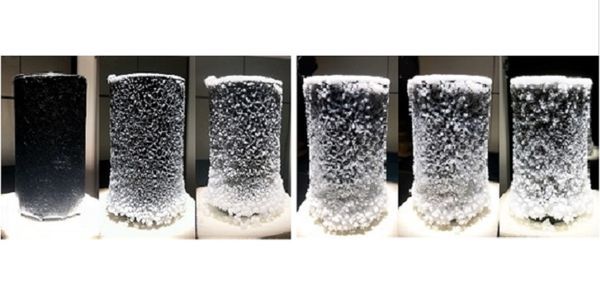
Solar-powered cup brews better brine treatments
"Unique membrane design prevents salt crusts from being produced during the distillation of brine water. A new distillation device can better recycle contaminants produced by a desalination plant to dramatically reduce waste. When sea water is purified using reverse osmosis membranes, a liquid brine containing salts and other impurities is often disposed of directly into the environment. Strict regulations are now pushing desalination plants to adopt zero liquid discharge principles to treat this waste water. Current technologies, however, rely on expensive electrical or thermal treatments to concentrate the brine. A more sustainable approach is now being investigated by Peng Wang and colleagues from the Water Desalination and Reuse Center at KAUST." [...]

New Experiment Aces Quantum Scrambling Test
"A research team led by scientists in the Joint Quantum Institute at the University of Maryland have implemented an experimental test for quantum scrambling, a chaotic shuffling of the information stored among a collection of quantum particles. The work has potential applications in quantum computing, and might even help reveal what occurs when quantum information gets pulled into a black hole. Their experiments on a group of seven atomic ions demonstrate a new way to distinguish between scrambling—which maintains the amount of information in a quantum system but mixes it up—and true information loss. Published in the March 7 issue of Nature, their protocol may one day help verify the calculations of quantum computers. “In terms of the difficulty of quantum algorithms that have been run, we’re toward the top of that list,” says Kevin Landsman, a graduate student in University of Maryland department of physics, a researcher at JQI, and lead author of the new paper. “This is a very complicated experiment to run, and it takes a very high level of control.” The research team—also includes JQI Fellow and UMD Distinguished University Professor Christopher Monroe; JQI Fellow Norbert Linke; Caroline Figgatt, now at Honeywell; Thomas Schuster at the University of California Berkeley; Beni Yoshida at the Perimeter Institute for Theoretical Physics; and Norman Yao at UC Berkeley and Lawrence Berkeley National Laboratory—performed their scrambling tests by carefully manipulating the quantum behavior of seven charged atomic ions using well-timed sequences of laser pulses." [...]

Researchers develop method to improve 3D-printed prosthetics by integrating electronic sensors
"With the growth of 3D printing, it’s entirely possible to 3D print your own prosthetic from models found in open-source databases. But those models lack personalized electronic user interfaces like those found in costly, state-of-the-art prosthetics. Now, a Virginia Tech professor and his interdisciplinary team of undergraduate student researchers have made inroads in integrating electronic sensors with personalized 3D-printed prosthetics — a development that could one day lead to more affordable electric-powered prosthetics. This newly published research out of the lab of Blake Johnson, a Virginia Tech assistant professor in industrial and systems engineering, took a step forward in improving the functionalities of 3D-printed personalized wearable systems. By integrating electronic sensors at the intersection between a prosthetic and the wearer’s tissue, the researchers can gather information related to prosthetic function and comfort, such as the pressure across wearer’s tissue, that can help improve further iterations of the these types of prosthetics. The integration of materials within form-fitting regions of 3D-printed prosthetics via a conformal 3D printing technique, instead of manual integration after printing, could also pave the way for unique opportunities in matching the hardness of the wearer’s tissue and and integrating sensors at different locations across the form-fitting interface." [...]
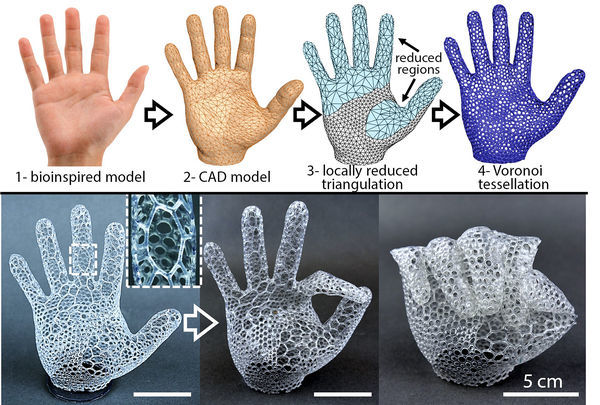
Robots created with 3D printers could be caring for those in golden years
"The world’s elderly population is booming. The number of older people — those age 60 years or older — is expected to more than double by 2050 and is growing faster than all younger age groups across the globe. This trend comes with an increasing demand for caregivers capable of providing 24-hour care, not only at hospitals or nursing homes, but also at private homes and apartments. Already, caregiving robots are programmed to ask questions a nurse would ask and can monitor patients for falls. These robotic assistants are expected to become increasingly marketable and reach 450,000 by 2045 because of the expected caregiver shortage in the United States. “Unfortunately, the external hard structure of current caregiving robots prevents them from a safe human-robot interaction, limiting their assistance to mere social interaction and not physical interaction,” said Ramses Martinez, an assistant professor in the School of Industrial Engineering and in the Weldon School of Biomedical Engineering in Purdue’s College of Engineering." [...]

Engineers develop concept for hybrid heavy-duty trucks
"Long-haul trucks with electric motors combined with gas-alcohol engines could slash pollution levels and greenhouse gases. Heavy-duty trucks, such as the 18-wheelers that transport many of the world’s goods from farm or factory to market, are virtually all powered by diesel engines. They account for a significant portion of worldwide greenhouse gas emissions, but little has been done so far to curb their climate-change-inducing exhaust. Now, researchers at MIT have devised a new way of powering these trucks that could drastically curb pollution, increase efficiency, and reduce or even eliminate their net greenhouse gas emissions. The concept involves using a plug-in hybrid engine system, in which the truck would be primarily powered by batteries, but with a spark ignition engine (instead of a diesel engine). That engine, which would allow the trucks to conveniently travel the same distances as today’s conventional diesel trucks, would be a flex-fuel model that could run on pure gasoline, pure alcohol, or blends of these fuels." [...]
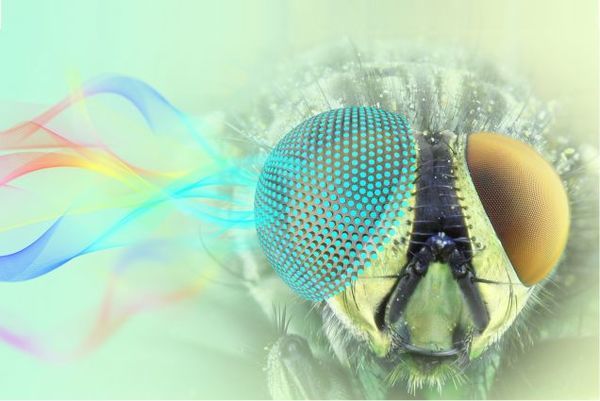
Researchers 3D print metamaterials with novel optical properties
"Engineers create novel optical devices, including a moth eye-inspired omnidirectional microwave antenna. A team of engineers at Tufts University has developed a series of 3D printed metamaterials with unique microwave or optical properties that go beyond what is possible using conventional optical or electronic materials. The fabrication methods developed by the researchers demonstrate the potential, both present and future, of 3D printing to expand the range of geometric designs and material composites that lead to devices with novel optical properties. In one case, the researchers drew inspiration from the compound eye of a moth to create a hemispherical device that can absorb electromagnetic signals from any direction at selected wavelengths. The research was published today in the journal Microsystems & Nanoengineering, published by Springer Nature. Metamaterials extend the capabilities of conventional materials in devices by making use of geometric features arranged in repeating patterns at scales smaller than the wavelengths of energy being detected or influenced." [...]
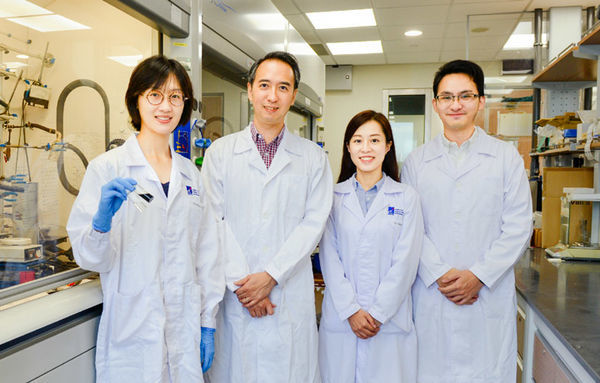
Smart liquid goes dark in the heat
"Nanowires that form and disperse as the temperature changes form the basis of a robust thermochromic liquid A smart liquid that darkens dramatically in response to rising temperature has been developed by researchers at A*STAR. The nanowire-based thermochromic liquid’s tunable color-changing behavior was retained even after hundreds of heat-cool cycles. This liquid could have applications ranging from smart windows to paper-based temperature sensors, the researchers say. Previous thermochromic liquids have usually been based on organic dyes or liquid crystals. Although amenable to industrial-scale production, organic dyes tend to degrade upon exposure to light, while liquid crystals require encapsulation to avoid degradation in air. A thermochromic liquid that overcomes these limitations has been discovered by Wen-Ya Wu and her colleagues from the A*STAR Institute of Materials Research and Engineering, in collaboration with researchers at the National University of Singapore." [...]

European Quantum Communications Network Takes Shape
"Today’s interconnected world is ever more vulnerable to cyberattacks, emphasising the importance of secure encryption to protect Europe’s critical infrastructure and communications. An agreement forged today between the European Commission and the European Space Agency marks the first steps towards creating a highly secure, pan-European quantum communication infrastructure. The development of terrestrial components of the quantum communication infrastructure will be under the responsibility of the EC’s Directorate-General for Communications Networks, Content and Technology (DG Connect). It would comprise a series of quantum communication networks, linking institutional users and their critical infrastructures, and sensitive communication and data sites in Europe. The space-based component, known as SAGA (Security And cryptoGrAphic mission), would be developed under ESA’s responsibility and consists of satellite quantum communication systems with pan-European reach. Magali Vaissiere, Director of Telecommunications and Integrated Applications at ESA, said: “Only by stimulating innovation can Europe place itself at the forefront of technology, and nowhere is this more critical than in the field of secure communications." [...]
Measurement of Semiconductor Material Quality is Now 100,000 Times More Sensitive
"The enhanced power of the new measuring technique to characterize materials at scales much smaller than any current technologies will accelerate the discovery and investigation of 2D, micro- and nanoscale materials. Being able to accurately measure semiconductor properties of materials in small volumes helps engineers determine the range of applications for which these materials may be suitable in the future, particularly as the size of electronic and optical devices continues to shrink. Daniel Wasserman, an associate professor in the Department of Electrical and Computer Engineering in the Cockrell School of Engineering, led the team that built the physical system, developed the measurement technique capable of achieving this level of sensitivity and successfully demonstrated its improved performance. Their work was reported today in Nature Communications. The team’s design approach was focused on developing the capability to provide quantitative feedback on material quality, with particular applications for the development and manufacturing of optoelectronic devices. The method demonstrated is capable of measuring many of the materials that engineers believe will one day be ubiquitous to next-generation optoelectronic devices." [...]
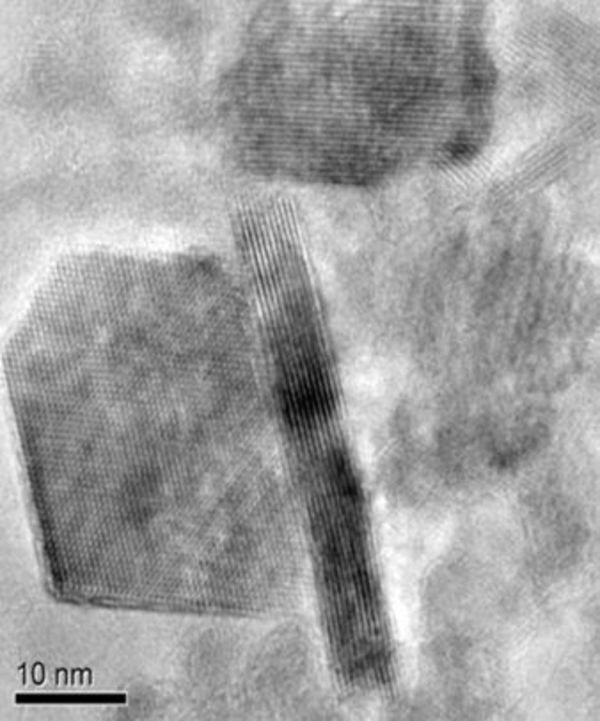
Graphene coating could help prevent lithium battery fires
"Lithium batteries are what allow electric vehicles to travel several hundred miles on one charge. Their capacity for energy storage is well known, but so is their tendency to occasionally catch on fire – an occurrence known to battery researchers as “thermal runaway.” These fires occur most frequently when the batteries overheat or cycle rapidly. With more and more electric vehicles on the road each year, battery technology needs to adapt to reduce the likelihood of these dangerous and catastrophic fires. Researchers from the University of Illinois at Chicago College of Engineering report that graphene — wonder material of the 21st century — may take the oxygen out of lithium battery fires. They report their findings in the journal Advanced Functional Materials. The reasons lithium batteries catch fire include rapid cycling or charging and discharging, and high temperatures in the battery." [...]
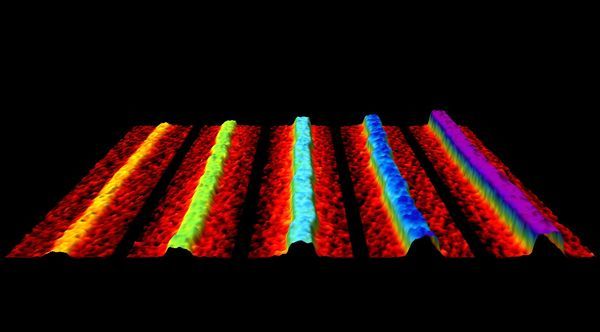
2D wonder materials
"VCU physics professor Loren Picco, Ph.D., is among a team of researchers that is the first to produce quantities of potentially revolutionary ribbons of phosphorene. Since the isolation of 2-dimensional phosphorene — the phosphorus equivalent of graphene — in 2014, more than 100 theoretical studies have predicted that new and exciting properties could emerge by producing narrow “ribbons” of the material. Now, those ribbons have been made and measured for the first time, and they could revolutionize electronics and fast-charging battery technology. In a new study published in Nature, researchers from University College London, the University of Bristol in the United Kingdom, Virginia Commonwealth University and Ecole Polytechnique Federale de Lausanne in Lausanne, Switzerland, describe how they formed quantities of high-quality ribbons of phosphorene from crystals of black phosphorous and lithium ions. One of the study’s co-authors was Loren Picco, Ph.D., associate professor in the Department of Physics in the VCU College of Humanities and Sciences. Picco’s research involves video-rate imaging with high-speed atomic-force microscopy, which enabled the detailed and rapid analysis of ribbons, in collaboration with the University of Bristol." [...]

New algorithm optimizes quantum computing problem-solving
"A Canadian quantum computer can solve complex problems more efficiently with an algorithm developed in Japan. Tohoku University researchers have developed an algorithm that enhances the ability of a Canadian-designed quantum computer to more efficiently find the best solution for complicated problems, according to a study published in the journal Scientific Reports. Quantum computing takes advantage of the ability of subatomic particles to exist in more than one state at the same time. It is expected to take modern-day computing to the next level by enabling the processing of more information in less time. The D-Wave quantum annealer, developed by a Canadian company that claims it sells the world's first commercially available quantum computers, employs the concepts of quantum physics to solve 'combinatorial optimization problems.'. A typical example of this sort of problem asks the question: "Given a list of cities and the distances between each pair of cities, what is the shortest possible route that visits each city and returns to the origin city?"" [...]
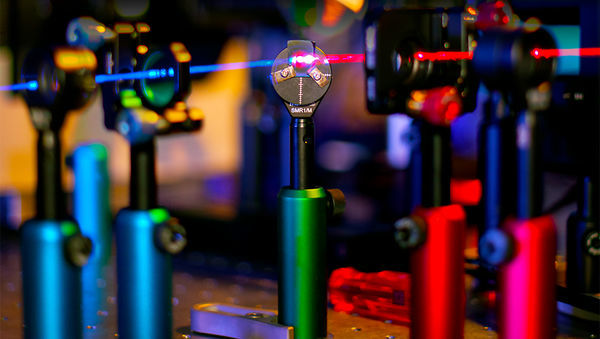
New tunable nanomaterials possible via flexible process invented by University of Bath physicists
"Physicists have developed a flexible way to synthesise a wide range of novel nanomaterials with potential applications in areas including optics and sensors. Physicists at the University of Bath have developed a flexible process allowing the synthesis in a single flow of a wide range of novel nanomaterials with various morphologies, with potential applications in areas including optics and sensors. The nanomaterials are formed from Tungsten Disulphide – a Transition Metal Dichalcogenide (TMD) – and can be grown on insulating planar substrates without requiring a catalyst. TMDs are layered materials, and in their two-dimensional form can be considered the inorganic analogues of graphene. The various Tungsten Disulphide morphologies synthesized – two-dimensional sheets growing parallel to the substrate, nanotubes, or a nanomesh resembling a ‘field of blades’ growing outwards from the substrate – are possible due to Dr. Zichen Liu’s PhD research at Bath to split the growth process into two distinct stages. Through this decoupling, the growth process could be routed differently than in more conventional approaches, and be guided to produce all these material morphologies." [...]

New hybrid energy method could fuel the future of rockets, spacecraft for exploration
"Nontraditional route shown to increase performance, burn rate Graphene, a new material with applications in biomedical technology, electronics, composites, energy and sensors, may soon help send rockets to space. A new propellant formulation method to use graphene foams – material used in electronics, optics and energy devices – to power spacecraft is being developed in Purdue University’s Maurice J. Zucrow Laboratories, which is the largest academic propulsion lab in the world. The research is showing success at increasing burn rate of solid propellants that are used to fuel rockets and spacecraft. “Our propulsion and physics researchers came together to focus on a material that has not previously been used in rocket propulsion, and it is demonstrating strong results,” said Li Qiao, an associate professor of aeronautics and astronautics in Purdue’s College of Engineering. The research team, led by Qiao, developed methods of making and using compositions with solid fuel loaded on highly conductive, highly porous graphene foams for enhanced burn rates for the loaded solid fuel. They wanted to maximize the catalytic effect of metal oxide additives commonly used in solid propellant to enhance decomposition." [...]

Ultrasound Aligns Living Cells in Bioprinted Tissues
"North Carolina State University researchers have developed a technique to improve the characteristics of engineered tissues by using ultrasound to align living cells during the biofabrication process. “We’ve reached the point where we are able to create medical products, such as knee implants, by printing living cells,” says Rohan Shirwaiker, corresponding author of a paper on the work and an associate professor in NC State’s Edward P. Fitts Department of Industrial & Systems Engineering. “But one challenge has been organizing the cells that are being printed, so that the engineered tissue more closely mimics natural tissues. “We’ve now developed a technique, called ultrasound-assisted biofabrication (UAB), which allows us to align cells in a three-dimensional matrix during the bioprinting process. This allows us to create a knee meniscus, for example, that is more similar to a patient’s original meniscus. To date, we’ve been able to align cells for a range of engineered musculoskeletal tissues.” To align the cells, the researchers built an ultrasound chamber that allows ultrasonic waves to travel across the area where a bioprinter prints living cells." [...]
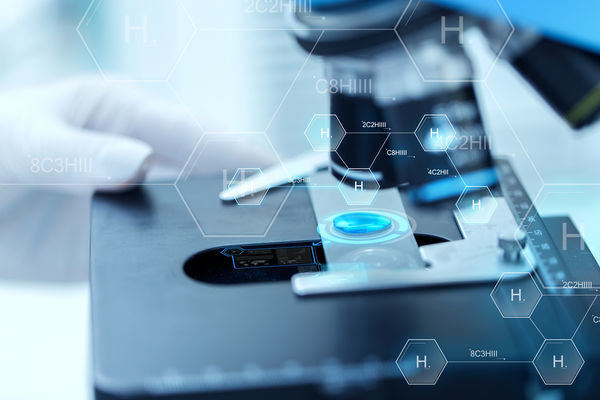
Scientists from NUST MISIS Create a Super-fast Robot Microscope to Search for Dark Matter
"Researchers from the National University of science and technology MISIS (NUST MISIS, Moscow, Russia) and the National Institute for Nuclear Physics (INFN, Naples, Italy) have developed a simple and cost-effective technology that allows increasing the speed of the automated microscopes (AM) by 10-100 times. The microscopes’ speed growth will help scientists in many fields: medicine, nuclear physics, astrophysics, neutrino physics, archeology, geology, volcanology, archeology. The development report was published in the Scientific Reports journal of the Nature publishing house. “In our study, we tested the technology of fully automated optical scanning of thin samples, on which the new generation of automated microscopes will be based. We analyzed the performance and estimated the achievable scanning speed in comparison with traditional methods, — said one of the authors, a researcher from NUST MISIS and INFN Andrey Alexandrov. Modern science requires the use of high-speed scanning systems, capable of conducting a high-precision analysis of the samples internal structure, of obtaining and analyzing large amounts of information." [...]
Documentação
A documentação é parte essencial do processo de aprendizagem e a Internet além de artigos interessantes de explorar também tem alguma documentação em formato PDF interessante de ler. Todos os links aqui apresentados são para conteúdo disponibilizado livremente pelo editor do livro.
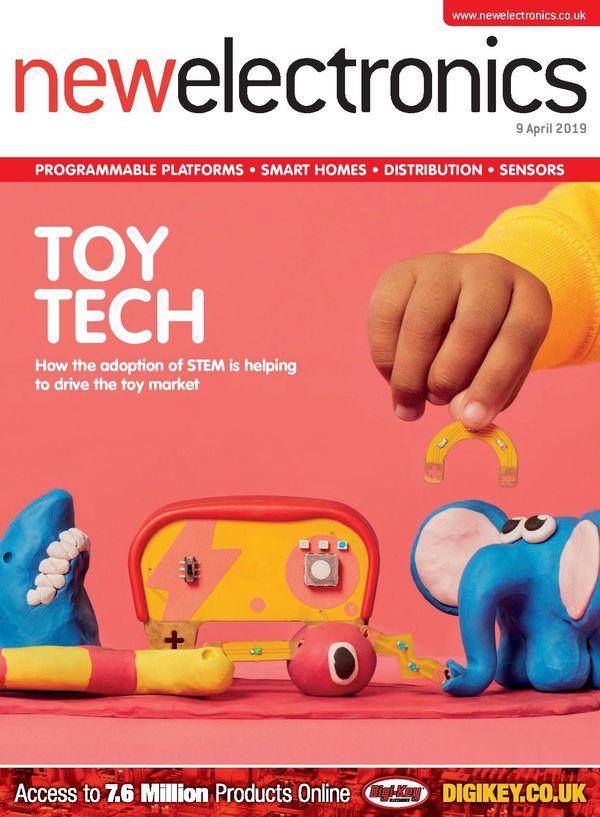
newelectronics 9 Abril 2019
"New Electronics is a fortnightly magazine focusing on technological innovation, news and the latest developments in the electronics sector. Downloadable as a digital page turner or pdf file, or offered as a hard copy, the New Electronics magazine is available in a format to suit you" [...]
Projetos Maker
Diversos Projetos interessantes.

Radical brad hacks - vulcan-74 retro game computer
"This project rewinds the clock all the way back to the mid 1970’s, when electronic video games consisted of nothing more than a few moving black and white pixels, and the home computer was still a vision only shared by garage hackers who were willing to connect all of the ICs by hand and then enter their code using toggle switches, watching the results on nothing more than a few blinking LEDs. Although the immortal 6502 CPU was released in 1975, it did not spawn any of the original home computer greats such as the Commodore PET, Apple II, Atari 8-Bit, VIC-20, C64, BBC, and Acorn until the late 1970’s and early 1980’s. Early video game consoles and arcade games also adopted the affordable 6502 CPU in the late 70’s, the most famous of these being the Atari 2600 Video Game System, released in 1977. Vulcan-74 is a DIY video game system as well as a complete computer, and it will also be powered by a single 6502 processor. The 6502 CPU will be the only processor on the entire board. All of the other ICs will be only 7400 variant logic gates and basic Static RAMs, which were the same types of ICs that were available in the mid-1970s, and used to create all electronic products from arcade games to aerospace navigation systems." [...]
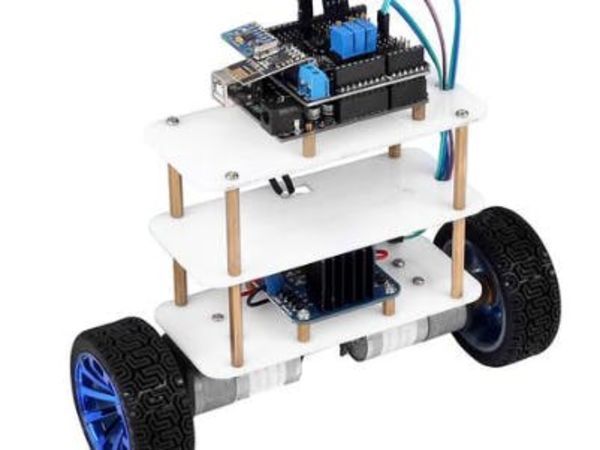
How to make a self balancing robot with arduino
"self-balancing robot is very popular nowadays and easy to make. in this blog post, you will learn how to make a self balancing robot with Arduino. you should have some knowledge of embedded c and hardware. you can find circuit as well as code for self-balancing robot in this post read carefully and follow the step to make self balancing robot. this self balancing robot have future we can use this concept in our two-wheelers . and this can use in the mini projects for ece or best electronic projects for final year The concept of this project is very simple we use Accelerometer mount over the robot which gives the 3-axis value." [...]

ESP32 Air Quality Monitor
"Keep track of air quality with pretty graphs These are my prototypes of an IOT air quality monitor primarily based on the ESP32 and CCS811 sensor. They're meant for indoor use. They are not the prettiest at the moment, but they work surprisingly well and run stable. If you encounter a strange language in the pictures, it's due to my mother tongue. General specifications: CO2 measuring range: 400-8192 PPM 12 hours of battery life provided by a 18560 cell Pretty graphs on a web interface Data can be exported to Excel and software alike Breaking it down The build: I bought a cheap plastic box on Aliexpress for this project. I drilled some holes on the front for screws, LED's, the button and made some space for the screen." [...]

Color Detecting Robot Using Smartphone and Evive (Arduino Based Embedded Platform)
"Using evive, weve made the line follower - a robot that follows a black colored line, and weve made the fruit piano. How about we combine the two features and make something that plays different sounds on detecting different colors? That is going to be our project of the day; were going to show you how to make a Smartphone-controlled robot that plays different sounds as it moves over and detects different colors. For making it, youll need evive and components from the evive Starter Kit, for programming it, youll need PictoBlox - our Scratch 3.0-based graphical programming interface, and Dabble - our ingeniously developed Smartphone app. You can download PictoBlox from HERE and get Dabble on Google Play. Ready for making colors musical?" [...]

NODEMCU ESP8266 Youtube Channel Subscribers and Views Counter
"I will explain to you how to make simple Youtube page Subscriptions and views counter From one of my previous projects (Bluetooth-controlled scrolling text), I have a finished 8x56 LEDs matrix consisting of 7pcs MAX7219 Led matrix modules 8x8, and located in the appropriate box. Let me mention that these modules are older, and as you see in the given picture, contain DIL IC on the front. The new modules are made in smd technology and usually composed of 4 coupled matrices, and they are turned 90 degrees clockwise. " [...]

Pocu-Weather
"POCU-WEATHER is a pocket-sized weather station. Which is Iot based application and helps in open-source monitoring of weather anywhere from the world. " [...]
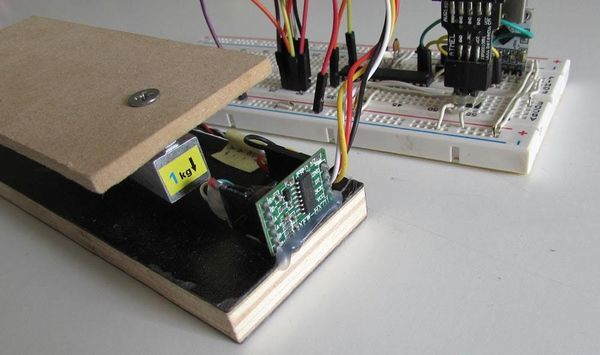
HX711 load cell amplifier library for AVR ATmega
"HX711 is a precision 24bit ADC IC designed for weigh scales and industrial control applications to interface directly with a bridge sensor. A load cell is a transducer that is used to create an electrical signal whose magnitude is directly proportional to the force being measured. The library you can find here is usefull to implement a weigh scale using the HX711. References used to implement this library are This HX711 Arduino library, https://github.com/bogde/HX711 And that other library here https://github.com/getsiddd/HX711 Methods to get raw values and unit values from the HX711 are provided. Also you can find function to calibrate the IC. Before using this IC you have to calibrate it against the load cell used." [...]
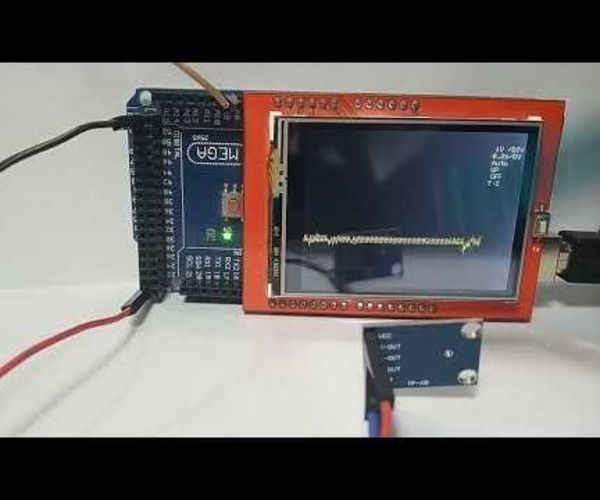
Arduino-Oscilloscope: Why It Works
"A few years back as I was getting into electronics and studying the basic principles. I found that a scope is the tool that helps you in almost everything. Now that I understood that, I set out to learn the basic principles of the working of a scope, after a few months, I thought to myself, well a oscilloscope is implementable on a micro-controller if I put myself in a learning point of perspective. Why a micro-controller, because it had all the things necessary to build one, like a ADC to take in a signal (but with no control front end), it had GPIO ports which could be used for a lot of purposes, it also has a CPU albeit meek! (I was thinking of a arduino). I started out with researching about arduino oscilloscopes which were good and very good, but I would have liked a simpler code that is easy to modify and understand." [...]

PasswordPump Passwords Manager
"This is v1.0 of the PasswordPump, a USB device that manages credentials for up to 254 accounts. Credentials (account names, usernames and passwords) are stored ONLY on the device itself, on two removable EEprom chips using military grade encryption (AES-128). They are not stored in the cloud or in a file on your computer where they are more exposed to hackers. Credentials are backed up on the device itself; i.e. encrypted credentials are moved from the primary EEprom chip to the backup EEprom on demand. You may remove the EEprom chips from the device (perhaps to keep a third or fourth backup)." [...]
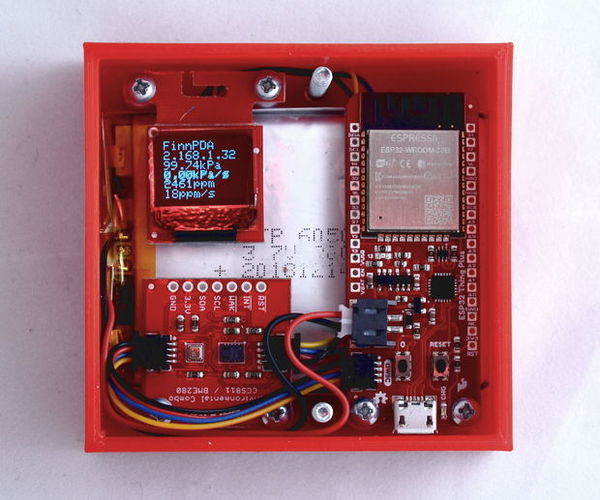
DIY Air Quality Sensor + 3D Printed Case
"This guide has all the information you need to create a very capable, pocket sized sensor. To get the most out of our DIY air quality sensor, we need it to be: Pocket-sized Battery-powered Have a charging circuit included Connected to USB Connected to WiFi and Bluetooth Readable with an included OLED screen Under $100 We want our pocket-sized sensor to be able to measure: Temperature Pressure Humidity CO2 levels TVOC (air quality) levels" [...]
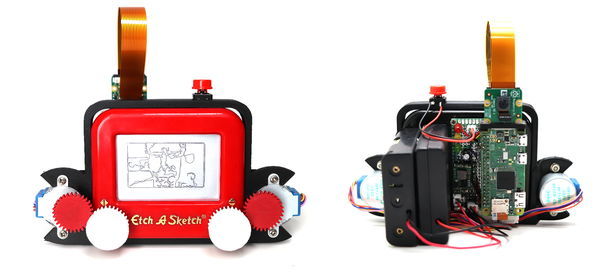
Etch-A-Snap - The Raspberry Pi powered Etch-A-Sketch camera
"Etch-A-Snap is (probably) the worlds first Etch-A-Sketch Camera. Powered by a Raspberry Pi Zero (or Zero W) it snaps photos just like any other camera, but outputs them by drawing to an Pocket Etch-A-Sketch screen. Quite slowly. Photos are processed down to 240x144 pixel 1-bit (black & white) line drawings using Pillow and OpenCV and then translated into plotter commands by building a network graph representation with networkx. The Etch-A-Sketch wheels are driven by two 5V stepper motors mounted into a custom 3D printed frame. The Etch-A-Snap is entirely portable and powered by 4xAA batteries & 3x18650 LiPo cells." [...]
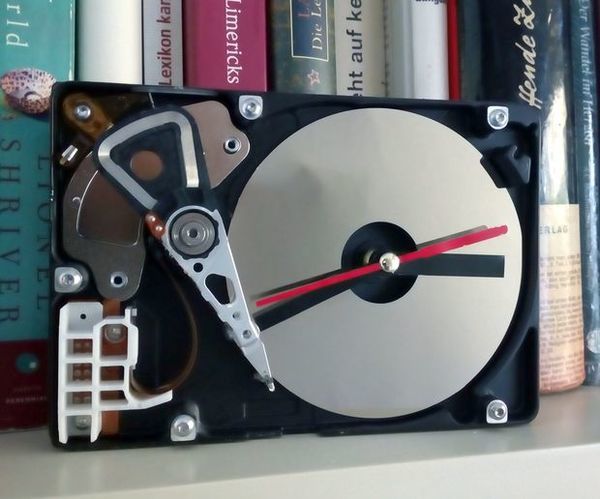
Simple Hard Drive Clock
"Upcycle an old spinning disk hard drive into an analog clock. These things are actually kinda cool looking on the inside. You'll need: An old hard disk drive A set of small screwdrivers with Torx / star heads (these are fairly cheap) A DIY clock mechanism (there are a bunch of these) If you can, try to get a variety of old hard disk drives as they vary quite drastically in how they are constructed and how easy / hard they are to disassemble and modify. In order to have the least amount of hassle, you'll ideally find one such as this, which is constructed and held together only by screws. Therefore, these models can be taken apart using only manual screwdrivers, without any use of power tools. Other Instructables rely on drilling or other more elaborate methods of taking the drive apart." [...]
Desktop Gigapixel Microscope
"In optical microscopes, there is a fundamental trade-off between field-of-view and resolution: the finer the detail, the smaller the region imaged by the microscope. One way to overcome this limitation is to translate the sample and acquire images over a larger field-of-view. The basic idea is to stitch together many high resolution images to form a large FOV. In these images, you get to see both the full sample, as well as fine detail in any portion of the sample. The result is an image consisting of about a billion pixels, much larger in comparison to the pictures taken by a dSLR or smart phone, which typically have around 10 to 50 million pixels. Check out these gigapixel landscapes for an impressive demonstration of the massive amount of information in these images." [...]
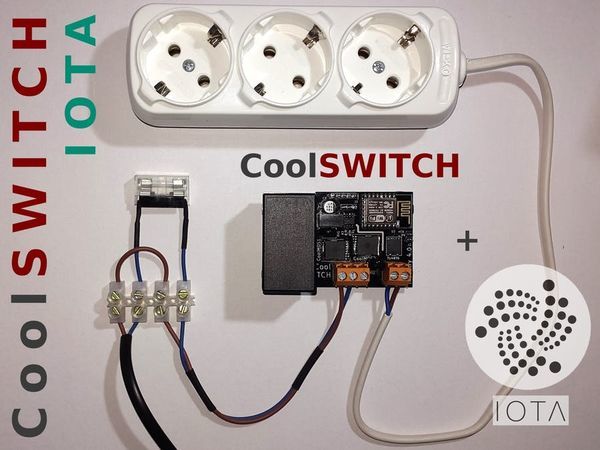
IOTA Enabled Solid-State Switch and Power Meter
"IOTA-based payment, energy tracking, malfunction detection and preventive maintenance. In this project I will show how to use a smart wireless switch device to IOTA-based applications such like IOTA-based payment, energy source tracking, malfunction detection and preventive maintenance. The device I will use is the CoolSWITCH, which is a wireless solid state switch with power measuring capabilities, I built couple of months ago. " [...]
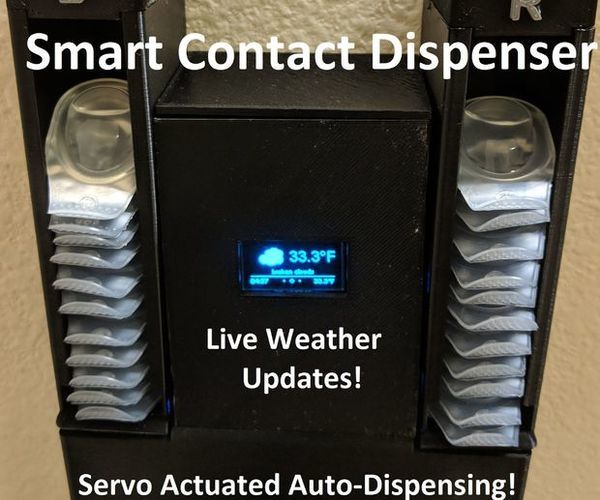
Smart Contact Lens Dispenser
"In this instructable I will be showing you how to make your own Smart Contact Dispenser! If you wear contacts then you are probably familiar with the boxes that they come in. Most people I know, including myself, use these boxes as permanent storage and we take out our contacts as needed every day. This resulted in a stack of boxes in my bathroom that was driving me crazy. I knew there had to be a better way to organize these contacts so I went searching on the internet. After only finding a contact storage dispenser that someone was trying to sell for $25, I designed up some basic ones which can be found here." [...]

Arduino Repulsive Electromagnetic Levitation
"This is the simplest example of repulsive magnetic levitation. A few years ago I was trying to make a device for repulsive magnetic levitation but all the circuits I had were complex and the setting was very difficult. After several unsuccessful and semi-successful attempts, I bought the levitator that you can see in the picture, but it's almost impossible to make it at home (DIY). " [...]
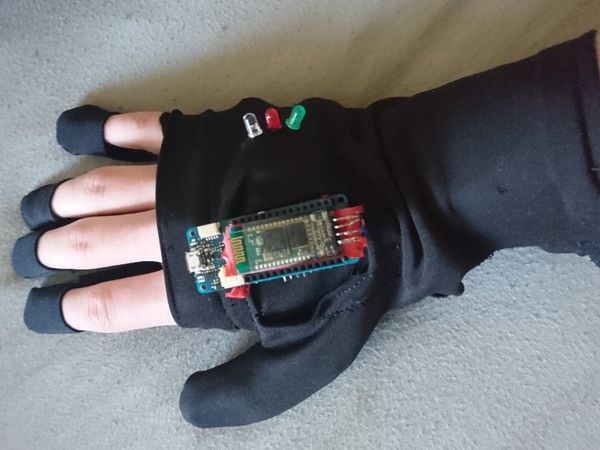
Wireless MIDI Glove
"A Bluetooth-enabled glove that encodes finger movement into MIDI signals and a Python GUI that creates a virtual MIDI port for synthesizers. I chose this project to be my final year project as I was intrested in wearable technology, MIDI synthesizing and wireless communications. The glove uses three of the fingers as signal bits to select notes being played while the remaining fingers are used to change the selection to note being played in the base octave, an octave higher or a chord in the key of C. The glove uses pressure sensors in the fingertips to create the notes and volumes, a flex sensor in the wrist to control pitch bend and this is transmitted through the Bluetooth module on the glove to the computer. " [...]

breakout game on PIC12F1572
"This project is a proof of concept about generating color NTSC signal with very simple hardware Although color NTSC composite signal is more complex to generate than VGA signal it require less wires. It is called composite because all information is contained in a single signal. Horizontal synchronization, vertical synchronization, color and luminescence all combined together contrary to VGA where all those signals travels on different wires. So to connect NTSC composite to a TV a simple shielded (coaxial) wire is required with a small RCA phono plug at each end. This project use only 2 actives components a crystal oscillator at 8 times NTSC chroma frequency, which is 3.5795345Mhz and a humble PIC12F1572 MCU in PDIP-8 format. I decided to implement the 1976 arcade game BREAKOUT but could have chosen any game of that era (before advent of 8 bits microprocessors), as they where all very simple in their design due to manufacturing cost (all done in TTL chips)." [...]
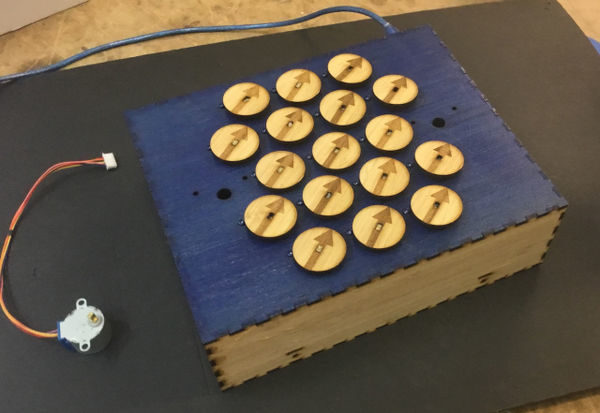
Unwisely driving 17 stepper motors from a bare arduino
"This is a quick and dirty way to get a whole bunch (up to 17) small stepper motors working off a single arduino, with no extra circuitry whatsoever. Why would you want to do that? Maybe you want to make a wall display, a clock or some other interactive object, and you can’t afford thousands of dollars for motors, and hundreds of hours spent wiring up boards for ‘proper’ drivers. (Side note, the back story to this is for a while now I’ve been wanting to make a big-ish display simulating vector fields, and I was scratching my head trying to come up with a way to do it that wasn’t ridiculously expensive. I ended up finding one that was not only cheap, but lazy too! )" [...]

Extremely Sensitive Cheap Homemade Seismometer
"Easy to build and cheap sensitive Arduino seismometer Otherwise, the seismometer itself consists of two parts, a mechanical tremor detector, and an electronic part that turns these tremors into electrical signals, amplified them and converts them into digital signals, which we can then visually monitor on the PC data logging software. To convert the tremors into electrical signals, a permanent magnet is used as a movable part and a solenoid with many windings for turning the magnet moves into electrical signals. In this particular case, I used the primary winding of a small mains transformer with a power of 1.8 W and a resistance of 1.2 kOhms. At This coil is a glued aluminum plate, which has the function to dump the oscillations of the moving magnet called the "Lentz effect". " [...]
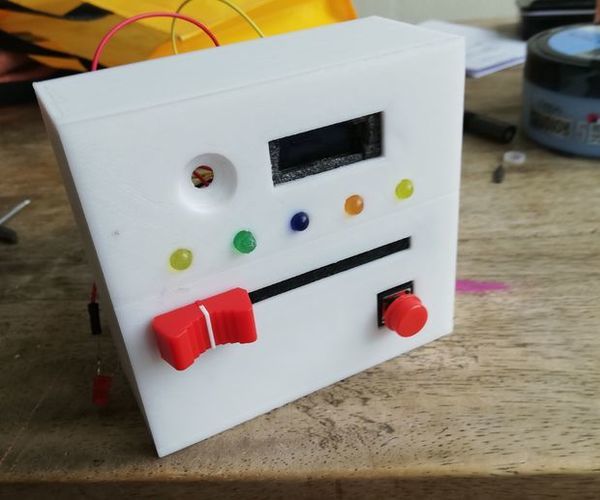
Arduino Reaction Game
"I made this game as a school assignment. We had to make something interactive with an arduino. This is my first Arduino project I've ever made, so it was pretty difficult, but not impossible! For this project you'll need: - Arduino. (I used the nano, but you can use any Arduino) - slider (potentiometer) - A button - LED screen, preferably 32 x 128 - At least six LED lamps (I would recommend getting a bunch of them, they will break easily) - A breadboard to test your project - battery holder - laptop/ computer - Soldering Iron" [...]

How to Make Infinity Mirror Heart With Arduino and RGB Leds
"Once in a party, me and the wife saw an infinity mirror, and she was fascinated by the look and kept saying I want one! A good husband always listens and remembers, so I decided to build one for her as a valentines day's gift. I wouldn't want to make another regular infinity mirror. So the idea is to have a heart shape, so I picked some 3/16 thick acrylic laying around for laser cutting . It would be better to use glass but I have no idea how to cut them. As for the electronics, I planned to build it with RGB LEDs for fancier effects, Neopixels come into mind, but also you can use WS2812 strips." [...]

Two-Digit Thermometer
"This is a two-digit LED digital thermometer I made as a birthday present for my friend’s son. As he's only two years old he can’t read yet, but he can read numbers, so I thought it would be fun for him to have something that would tell him the temperature on a seven-segment display: It uses a DS18B20 1-Wire temperature sensor, and an ATtiny84 to drive the display and read the sensor. It's just over 25mm square; about the size of a British 50 pence piece. Introduction The two-digit thermometer is designed so it could be put in a waterproof case outside the window, to show the outside temperature in all weathers. To conserve power the thermometer flashes the temperature every 24 seconds, and then goes to sleep, and it achieves a battery life of about a year with a CR2032 button cell. The thermometer can display temperatures between -19°C and 99°C." [...]

PCB Touch Piano
"A piano for your pocket? Sure! Using a printer toner transfer, copper etching solution, and a Teensy 3.2 we make a tiny MIDI controller that responds to a simple touch of a finger.You'll need some materials:100mm X 70mm copper PCB Teensy 3.2 Ferric Chloride Design Software (I used Illustrator) Arduino IDESoldering toolsDigital Audio Workstation (I used Ableton Live)" [...]
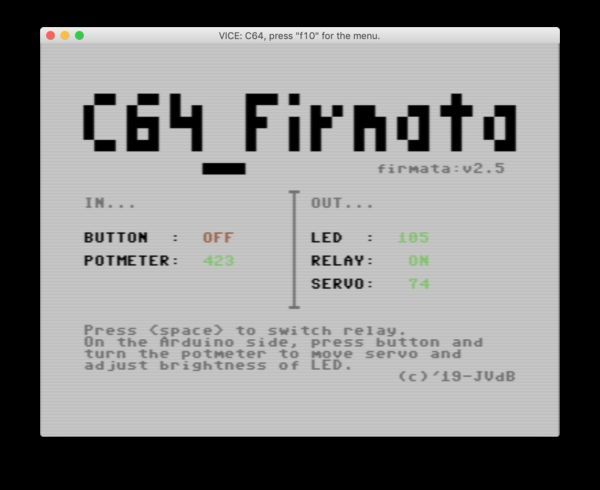
Interface a C64 with an Arduino using Firmata
"Interface a C64 with an Arduino using Firmata. This is a Firmata client implementation for the C64 using the userport at 2400 baud for communications. Prerequisites You'll need: x64 Arduino UNO Grove shield, servo, button, LED, potmeter, relay Optional: DIY for the Grove stuff A real C64 A way to transfer the program to the C64 Userport connector Wires between the C64 and the Arduino UNO" [...]
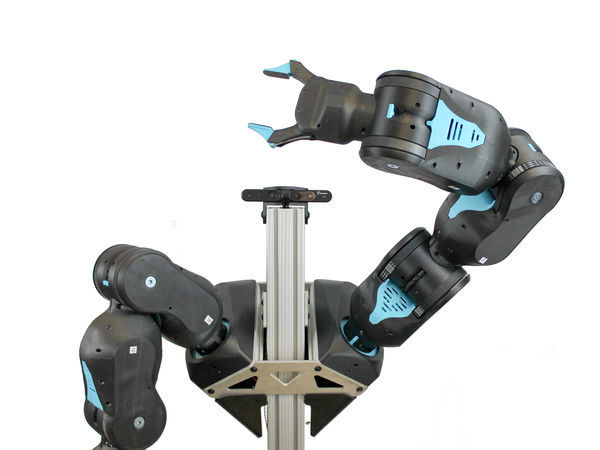
Project Blue
"Within UC Berkeley’s Robot Learning Lab, we have been developing AI for robotic learning and control, seeking to answer the question: “How can AI improve the capabilities of existing robots?” For Project BLUE, we instead turned our attention towards developing robots for AI-based control, seeking to answer the question: “How can AI change the robot design paradigm?” After a three year effort across a multidisciplinary team of more than 15 researchers, we’ve designed, built, and tested BLUE - the Berkeley robot for Learning in Unstructured Environments. BLUE is a low-cost, high-performance robot that is intrinsically safe, developed from the ground up with ever-increasing Artificial Intelligence capabilities in mind. In a paper to be presented at the IEEE International Conference on Robotics and Automation in Montreal in May, we describe the key design criteria, trade-offs, and actuation performance for BLUE. Next up for the project is continued stress testing and ramping manufacturing. From there, the goal is to get these affordable robots into as many researchers’ hands as possible. Prototypes of BLUE have already been shipped to early adopters through the organization Berkeley Open Arms." [...]
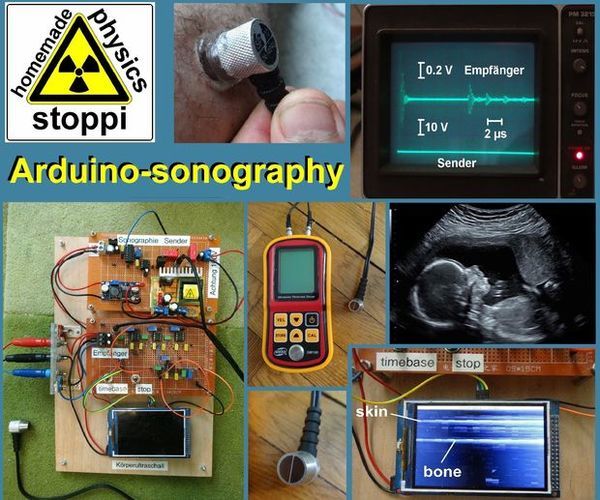
Body-ultrasound Sonography With Arduino
"My hobby and passion is to realize physics projects. One of my last work is about ultrasonic sonography. As always I tried to make it as simple as possible with parts you can get on ebay or aliexpress. So let's take a look how far I can go with my simple items... I was inspired by this a bit more complicated and more expensive project: https://hackaday.io/project/9281-murgen-open-sourc... Here are the parts you'll need for my project: the main parts: a gauge to measure the thickness of paint for 40 USD: ebay paint thickness gauge GM100 an arduino Due for 12 USD: ebay arduino due a 320x480 pixel display for 11 USD: 320x480 arduino display two 9V/1A power supplies for the symmetric +9/GND/-9V supply ultrasound-gel for sonography: 10 USD ultrasound gel for the transmitter: a step-up-converter for the needed 100V for 5 USD: 100V boost converter a common step-up-converter supplying 12-15V for the 100V-boost-converter for 2 USD: XL6009 boost-converter a LM7805 voltage regulator monoflop-IC 74121 mosfet-driver ICL7667 IRL620 mosfet: IRL620 capacitors with 1nF (1x), 50pF (1x), 0.1µF (1x electrolytic), 47µF (1x electrolytic), 20 µF (1 x electrolytic for 200V), 100 nF (2x MKP for 200V: 100nF20µF resistors with 3kOhm (0.25W), 10kOhm (0.25W) and 50Ohm (1W) 10 kOhm potentiometer 2 pcs." [...]
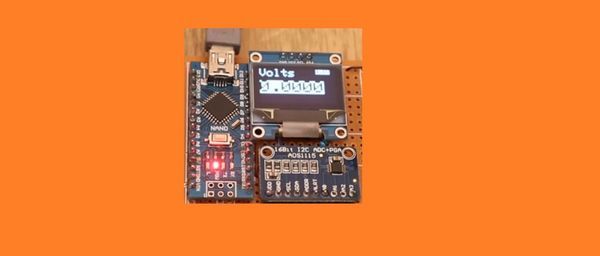
Praduino Arduino-Based Multimeter
"The Praduino multimeter is based on Arduino Nano. This multimeter can work on normal power supply or with 3.7V LiPo battery. This is a portable digital arduino nano based PRADUINO MULTIMETER. The main feture of this multimeter is that it can indicate: 1)resistance 2)potential difference 3)inductance 4)capacitance 5)current This multimeter can be operated with 3.7v lipo battery. this multimeter works with arduino nano and ADC module. other component list is menioned in item list." [...]
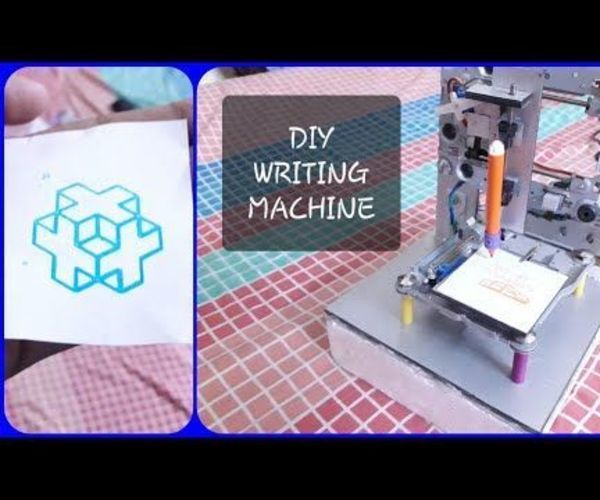
DIY Writing Machine Using Scratch
"Hi everyone welcome to our new instructables today's project is a mini CNC plotter which have been made using old recycled scratch materials so let's see how it's made" [...]
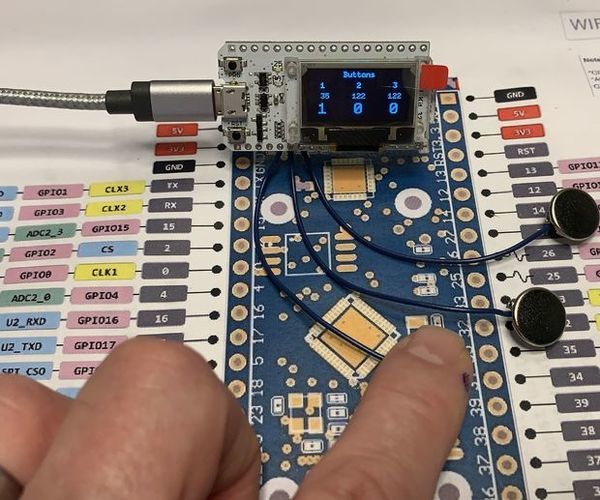
ESP32 Capacitive Touch Input Using "Metallic Hole Plugs" for Buttons
"As I was finalizing design decisions for an upcoming ESP32 WiFi Kit 32 based project requiring three button input, one noticeable problem was that the WiFi Kit 32 does not possess a single mechanical pushbutton, yet alone three mechanical buttons, for input. However, the WiFi Kit 32 does have plenty of capacitive touch inputs, so I spent some time assembling hardware, writing software and testing a three button input design utilizing the ESP32 capacitive touch input feature and three 3/8" "metallic hole plugs" for buttons. As anyone who has experimented with the ESP32 capacitive touch inputs has discovered, the touch inputs are most certainly noisy enough to require filtering for reliable input detection. To minimize the total parts count for the upcoming project, I determined that a simple interrupt driven digital filter (more of a "debounce" than a filter, but I digress), as opposed to adding external filter hardware, could quiet down the noisy inputs. And after testing, it became apparent that the ESP32 capacitive inputs, three 3/8" metallic hole plugs, and some digital "filtering" software, would indeed provide a reliable three button input for the design. So if you are interested in testing capacitive input with digital filtering on an ESP32, I've included the source code "Buttons.ino" in the Arduino environment format along with assembly and programming instructions, plus a brief description of the source code, for what I discovered to be a highly reliable three button input." [...]
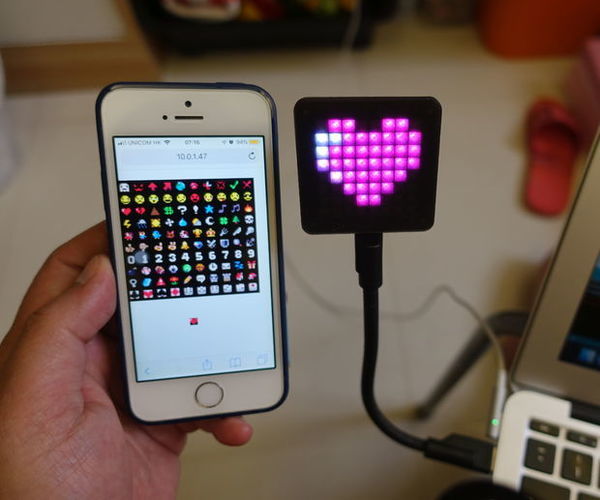
IoT Emoji Sign
"This instructables show how to use an ESP8266 and some NeoPixels to create an IoT Emoji Sign. ESP8266 dev board Any ESP8266 board should be ok. This time I am using WeMos D1 Mini Pro, this is smallest and thinnest dev board I can find. If you want it portable, choose a board with Lipo support. NeoPixels This project use Arduino Adafruit_NeoPixel library, any compatibles LED chip is ok, such as WS2812, WS2812B, SK6812, SK6812mini ... etc. This time I am using 64 LED chips of SK6812mini to make a tiny 8x8 matrix panel." [...]
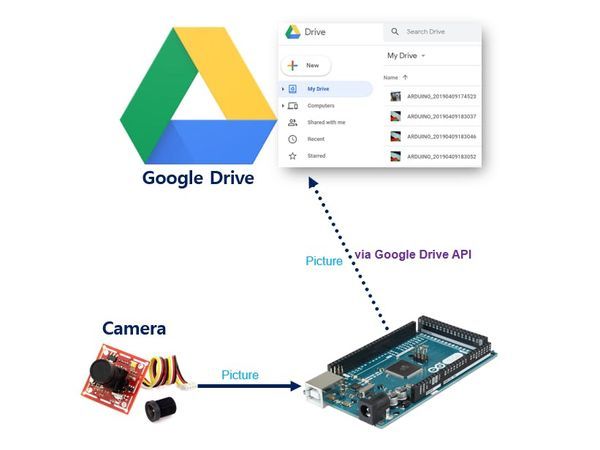
Arduino - Take Picture - Upload to Google Drive
"Arduino takes picture from camera and upload it to Google Drive via Google Drive API. Login process is via OAuth 2.0. How It Works 1. Login to Google Account via OAuth 2.0 for IoT devices to obtain access_token. Login process is described in this project on Hackster. 2." [...]

DIY Arduino based wire cutter machine
"Hello guys if you are electronics guy like me and making projects for learning and fun, so many time you need to cut some wire for the project, as feel so bored to always cut wires manually because I need it frequently so I build my own tiny machine to cut wire for me. This post is about how I have made a machine to cut electric wire in predefined length and quantity. Arduino nano is used as microcontroller, for the project I have used 2 NEMA 17 stepper motor one for Feed and one for cutting. Wire is pushed towards cutter by using extruder of 3d printer One 16X2 I2C LCD display used for data visualization and three Push buttons are used for data Input.. To give professional and neat and clean look to my project I have design a PCB and order it from JLCPCB JLCPCB is leader in PCB manufacturing they are providing 10 prototype PCB in just 2$ $2 for 10 PCBs (Any Color): https://jlcpcb.com" [...]
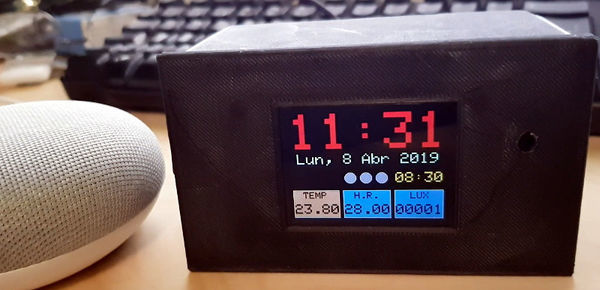
Claudio
"Claudio is a wake up alarm based on ESP32 by Espressif Systems and programmed with Arduino IDE" [...]
That's all Folks!


